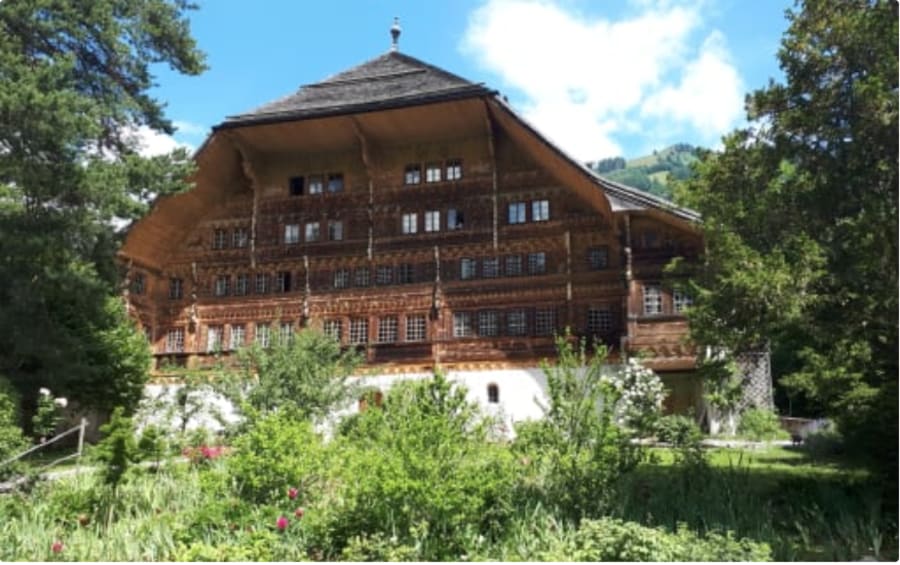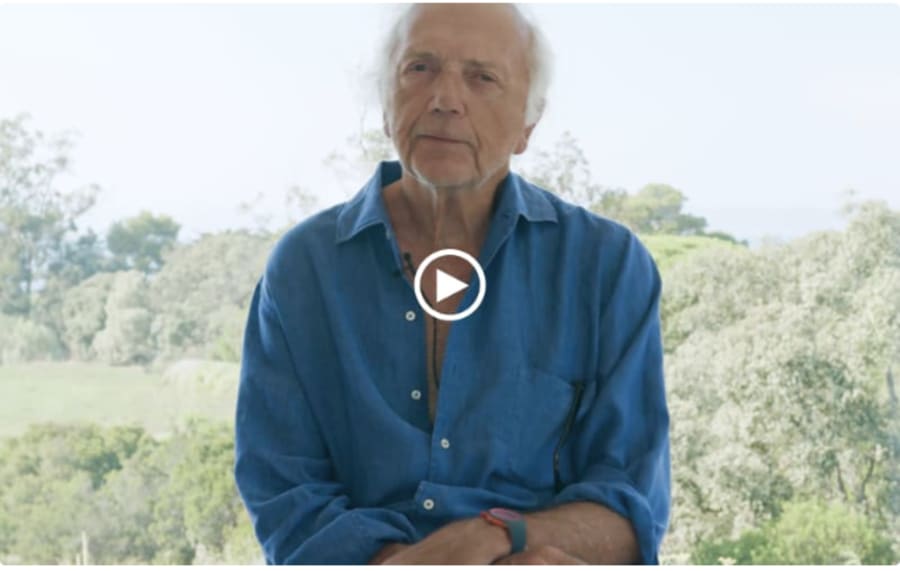‘Sorry, I must speak to the art handler. We still have two or three works to hang!’ Isabelle Maeght lights a cigarette, nods at the bouquet presented to her by the florist, and confirms to the handler that he can, indeed, hang the painting ‘next to the Braque, but in the center.’
In a few hours’ time, the Fondation Maeght – established by Maeght’s grandparents, Aimé and Marguerite, in the village of Saint-Paul-de-Vence, a few kilometers from Nice in the south of France – will host an event to celebrate its 60th anniversary and to inaugurate an extension that has enabled the creation of three new exhibition spaces.
Maeght, 68, director of Galerie Maeght in Paris and a member of the Board of Directors of Fondation Maeght, is overseeing the finishing touches. Here, everyone gets involved. ‘We all wear 15 hats!’ she laughs. ‘We welcome 150,000 visitors a year, but we’re only a team of 12.’ Maeght tells me she’s done ‘all the jobs here’, from bartender to cashier, from bookseller to secretary.
Inaugurated in 1964, Fondation Maeght is France’s first private foundation for modern and contemporary art, with more than 13,000 works in its collection. As soon as visitors enter the pine-dense grounds, they encounter several bronze sculptures by Alexander Calder, the stark black outlines of which contrast with the ochre and white hues of the foundation’s walls. This exceptional setting is enhanced by glorious sunshine and the sound of cicadas.
The history of the foundation is the story of a friendship between a family and a group of artists. In the 1950s, Parisian gallery owners Aimé and Marguerite Maeght wanted to create a meeting place for artists, a kind of collaborative studio, in the south of France, where they vacationed. Encouraged by the painter Georges Braque and the writer André Malraux – then Minister of State for Cultural Affairs – the couple realized their ambition with the help of their artist friends: Alexander Calder, Marc Chagall, Alberto Giacometti, Joan Miró, and Raoul Ubac all contributed to the design of the building and gardens.
Aimé Maeght, friend of Chagall, Giacometti, and Matisse
Conceived by Catalan architect Josep Lluís Sert, who also designed Miró’s studio in Mallorca, the Fondation Maeght is surrounded by outdoor spaces filled with site-specific works. The Giacometti Courtyard houses a number of large-scale sculptures – including Walking Man I and II (1960), Standing Woman I and II (1960), and Large Head (1959–60) – while Miró’s Labyrinth (1961–81) consists of 250 sculptures and ceramics installed along a promenade overlooking the sea. On one of the bookshop’s exterior walls is Chagall’s mosaic Les Amoureux (The Lovers, 1963–65), while the café furniture – which is still use today – is the work of Giacometti’s brother, Diego.
‘The Maeght family’s all-encompassing relationship with art lends a richness to the collection that you don’t find in traditional institutions,’ says director Nicolas Gitton. ‘As a child, Isabelle used to sit on Giacometti’s lap!’ These connections have endured over the generations. ‘The friendship between our families facilitates dialogue. We have a very different relationship with artists and artists’ heirs to other museums,’ adds Maeght. She recalls an exhibition of work at the foundation by Spanish sculptor Eduardo Chillida, devised with the help of his son. It was, Maeght tells me, ‘one of the most powerful we’ve ever done.’
‘Aimé Maeght’s close friendship with these artists [also] led to the publication of literary works,’ adds Marie-Thérèse Pulvénis de Séligny, curator of the Maeght Foundation’s current exhibition, ‘Amitiés, Bonnard–Matisse’ (Friendships: Bonnard–Matisse). Presenting works by the two French painters, their correspondence with the Maeght family, and photographs of their studios, the exhibition also includes an issue of Pierre à feu (Flint, 1947) – a magazine edited by the Maeghts’ son, Adrien – with 17 illustrations by Matisse and texts from Louis Aragon, Thérèse Aubray, Roger Caillois, and René Char.
‘Since Aimé Maeght was also a publisher, he had the opportunity to edit poets whose texts were illustrated by artists, so he created a literary magazine for the gallery,’ explains Pulvénis de Séligny. A little further on in the exhibition, we discover video footage, filmed by Adrien, of Matisse drawing Marguerite. The closeness of their friendship is evident and lends a unique sensibility to ‘Amitiés, Bonnard–Matisse’ – just as such connections do to all the foundation’s exhibitions.
An extension to the permanent collection
Strengthened by its links to the past, the Maeght Foundation is nonetheless looking to the future. The first step was to extend the premises, without altering them.
Architect Silvio d’Ascia was commissioned to design a subterranean extension, involving the removal of 4,000 m3 of earth, to create another floor beneath the existing building. The project resulted in 500 m2 of additional exhibition space for the permanent collection, illuminated by huge, floor-to-ceiling windows. A Calder mobile floats in the center of the room. On the walls hang paintings by Braque, Marco Del Re, and Wassily Kandinsky. ‘We’re finally going to be able to stage all the exhibitions we’ve been dreaming of for years, safe in the knowledge that we will still have space to show the publicly acclaimed works in the permanent exhibition, keeping everyone happy,’ concludes Gitton.
Launching this summer, the newly expanded foundation will kick off with a concert by Pete Doherty and dance performances by the American artist duo Gerard and Kelly. Maeght also mentions projections, dinners, and readings by actors. ‘We try to create unexpected moments,’ she tells me delightedly. ‘At the age of 60, the foundation has never felt so young!’
Leïla Beratto is a journalist and filmmaker. She worked as a correspondent in Algeria for French-language media from 2012 to 2020. She is also co-founder of the online media platform 15–38 Méditerranée.
English translation: Art Basel.
Caption for top image: Joan Miró, Oiseau lunaire, 1968.
All images by Stephanie Davilma for Art Basel.
Published on August 22, 2024.


